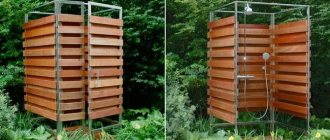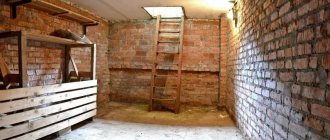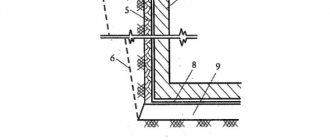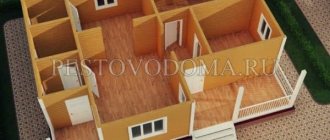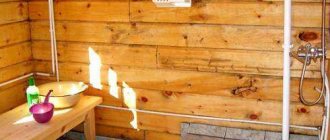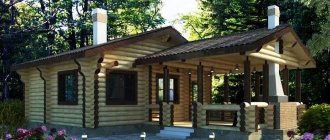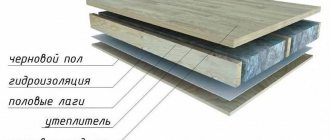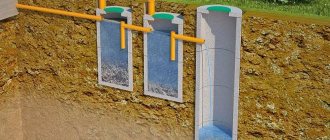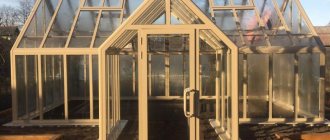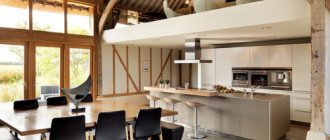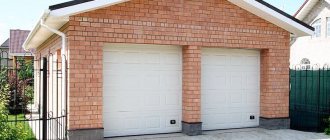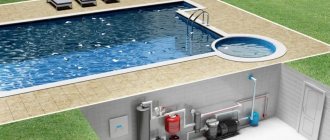Nowadays, such a form of private entrepreneurship as cattle breeding is very popular. Mini-farms are common, which are small complexes for maintaining a herd of approximately 20-100 cows. On such a farm you can keep farm animals to produce milk and meat. However, the first step to starting a profitable business is setting up a farm.
How to build a farm for cows?
Cattle farming, where farm animals are raised, provides an opportunity for financial profit. First you will have to buy a couple of dairy cows. And over time, the herd size will increase, which will contribute to the growth of business profitability.
But before you decide to start farming for profit, you need to carefully weigh the pros and cons.
To build a mini-farm for cattle, you will first have to resolve the following issues:
- select a site for a barn;
- purchase or lease a plot of land;
- acquire the necessary tools;
- purchase several heads of livestock of both sexes;
- create certain conditions for keeping each individual;
- maintain cleanliness in areas where animals are located;
- clean up manure.
It should also be taken into account that when running a farm you will have to incur considerable expenses for:
- purchasing building materials for a future farm;
- construction, to hire specialists, since all the work must be done with one’s own hands (for example, assistants are needed to erect a roof);
- purchasing and transporting cows;
- hiring workers to care for animals (the farm owner can handle 1-2 animals on his own, but if the herd size reaches 10 animals or more, he is unlikely to be able to do the work without outside help);
- feed purchases;
- payment for veterinary services.
Over time, when the farm is already operating at full capacity, profit can be received from sales:
- meat and milk;
- skins;
- bulls and heifers;
- livestock feces as fertilizer.
In addition, even mating can bring profit if you have a stud bull on your farm.
Purchase of equipment
Machinery and equipment for a dairy farm are an important component, because without them it will be quite difficult to manage.
- Tractor for household needs, transportation of feed, removal of manure, Price - 300,000 rubles.
- Mower KRN-2.1. Price – 120,000 rubles.
- Rakes and tedders, as well as other attachments necessary for the production and preparation of hay. Price – 200,000 rubles.
- Gazelle to transport milk, meat for sale, feed, meat and the like. You don't have to buy a new one. Cost – 400,000 rubles.
- Milking machines for automatic milking of cows. 5 items. A total of 100,000 rubles.
- Auxiliary equipment, including office equipment, buckets, cans, containers, shovels, forks and other tools – 100,000 rubles.
- Mini workshop of a plant for the production of dairy products of the Kolax-503 type. A modular mini workshop of a plant for processing milk into dairy products can provide: pasteurized milk, packaged in plastic bags, kefir drink in bags, sour cream by weight in bags, cottage cheese by weight and the like. The mini workshop of a dairy plant for milk processing is supplied in a modular version and is connected to communications. A mini workshop of a dairy plant of the Kolax-503 type costs from 900,000 rubles.
Total: 1,920,000 rubles.
How to obtain a building permit?
A simple way is to enter into an agreement with a construction company that will do all the necessary work. The main thing is to carefully read the terms and conditions specified in the contract. You need to work exclusively with professionals to avoid future problems. Also during the construction process, the requirements put forward by environmental, sanitary and fire services should be taken into account.
To obtain permission to build a livestock farm, the customer must send the following documents to the administrative authorities:
- a diagram of the land plot where the construction of the object is proposed with the obligatory designation of places of archaeological heritage, if any;
- diagram of the land plot with the location of the facility up to the red line;
- data regarding engineering structures indicating the site plan and connecting the facility to engineering supplies.
In addition, the following must be provided:
- statement;
- documentation confirming the right to use the land plot;
- design of architectural buildings.
Administrative authorities may not make a decision in your favor if there is a discrepancy with the project regarding the use of the land plot or if deviations from the prescribed norms and rules are found.
Requirements for a barn
The main requirement for livestock farming and livestock sheds is the availability of reliable and spacious premises. The inside of the building must be dry, clean and warm. According to established standards, the walls of the building must be at least 2.5 meters in height, and the roof - 3.5 meters close to the ridge. In addition, the building must be equipped with a ventilation system; window openings must be made slightly higher than the animals’ heads reach, so that daylight can enter the barn.
If these requirements are met, it is possible to make a good profit regardless of the period of the year. The owner of the farm will have to care for the herd, milk the cows, keep animals for meat, and sell the skins. This will ensure a stable material income, since these products are always in demand. To increase profits, you can expand your farm over time.
Typical design device
First of all, remember one rule: the comfort of the cows comes first. This is the only way you will receive good quality meat and dairy products and recoup your costs. Regardless of the livestock, a convenient barn consists of the following sectors:
- stalls with feeding trough, drinking bowl and waste disposal;
- food storage room (kitchen);
- maternity area for newborn calves;
- area for walking animals;
- utility room for storing equipment;
- manure collection area;
- compartment for storing milk, as well as containing milk containers;
- boiler room for heating all rooms.
The stalls are arranged in rows depending on the number of heads. In individual farming, there are mainly single-row, two-row or three-row buildings.
How to design a barn?
Having decided to build a mini-farm for raising farm animals, the first step is to design a barn for keeping livestock. When constructing it, they often resort to frame or frameless construction methods. When choosing a frame technology, the structure is built taking into account the wishes of the future owner; for this, the following building materials are used:
- brick;
- cinder blocks;
- concrete slabs.
With the frameless method, structures are built that resemble hangars, the creation of which uses metal. Such buildings are a more economical option, but they do not have window openings, so the resulting barn will end up without natural ventilation.
When constructing hangar buildings, certain requirements must be observed:
- it is necessary to provide for the possibility of connecting the electrical network and water supply;
- Special devices must be installed in the premises to monitor the well-being of animals. Devices are needed to monitor changes in the microclimate;
- the area of the building must occupy at least 1000 m2;
- the height of the building must be at least 6 meters;
- the size of the structure is determined by the size of the future livestock. For a herd of 50 heads, it is necessary to build a barn reaching approximately 70 m in length and up to 15 m in width.
An important role is played by what kind of products the farm owner expects to produce - dairy or meat. This must be taken into account when designing a future mini-farm.
If the farmer expects to receive income specifically from the sale of milk, he will have to build a separate building where the collection, bottling and quality control of the product will be carried out. As for the farm for raising meat breeds, it is necessary to equip a special place for cutting carcasses, a workshop and a laboratory.
Staff salaries
To maintain a dairy farm with a livestock of 50 animals, taking into account height, at least 4 people are required:
- Manager – 25 thousand rubles;
- 2 milkmaids – 20 thousand rubles each. Total 40 thousand rubles.
- 2 handymen for 20 thousand rubles. Total 40 thousand rubles.
- 1 tractor driver – 25 thousand rubles.
Veterinarian services will cost 20 thousand rubles. A visiting accountant will cost 15 thousand rubles. At the same time, with their consent, you can pay the staff partially with dairy products, that is, using commodity-money relations.
Total: 165,000 rubles.
The process of building a mini-farm for cattle breeding
For novice livestock farmers who want to try their hand at raising dairy cows, the smartest thing to start with is to set up a mini-farm to house a maximum of 30 head of cattle. To build a complex, you can turn to professionals for help by ordering the construction of all the necessary buildings. You can also do all the work yourself. In the first case, you will not have to make any special efforts, but this will require significant financial investments.
The building in which 30 cows will be kept must be equipped with the following premises:
- cattle pens;
- a stall for giving birth to cows;
- sections for young individuals;
- fodder section;
- compartment for storing equipment;
- gutters for removing livestock waste products;
- washing;
- boiler room;
- laboratory.
In the future, if the business proves successful and generates stable profits, the farm may be expanded. In the process of building a barn to house 50-100 cows, you will have to think about how to automate work on the farm, acquire automatic devices (so-called mixers - grinders, mixers and dispensers, a milking machine, a manure conveyor, an automatic drinker). Animal pens in this structure are often arranged in 2 rows.
A livestock farm for keeping 100-200 cattle is already a large-scale production, which requires complex design documentation (separate boxes where the cows will eat and rest, a feed passage, a passage for livestock, 6-8 rows with stalls). It is better to entrust the construction of such barns to a construction company with experience in this field of activity.
When a farmer for some reason (for example, due to a lack of material resources) is unable to keep 30 cows, he can build a barn designed for 20 cows. Such a mini-farm is characterized by a smaller number of pens and the absence of a sewer system (manure will have to be removed manually). Often the best option is to build a new building for housing cows, which takes place in several stages.
Drawing up a business plan
The success of farming activities, first of all, depends on a competent feasibility study. Not every entrepreneur can afford to build a barn with their own funds. Therefore, special attention should be paid to drawing up a business plan for a 10-head cattle mini-farm with all calculations.
Efficiency calculations take into account such basic indicators as:
- Rent for the use of land under a barn and pasture for walking and feeding animals in the summer.
- Design and construction costs. For cows, you can convert one of the outbuildings or rent an empty collective farm. This method seems economical only at first glance. An old, unsuitable premises will require serious investment in repairs, refurbishment and disinfection. The construction of a new barn will, of course, cost more, but it will meet all the necessary standards.
- Payment for connection to utilities: electricity and water supply. In some cases, you will need to pay additionally for the creation of a transformer or distribution substation, cable lines within the boundaries of the site.
- Purchase of necessary equipment: milking machines, drinking bowls, feeders, buckets, cans, cleaning equipment.
- Purchase of dairy livestock and feed: hay and feed.
- Costs for conducting routine veterinary, sanitary and epidemiological examinations, purchasing medicines and veterinary preparations.
- Salary of hired personnel: milkmaid, cattleman or laborer.
- Taxes, payment of interest on the loan and costs for consumed resources: electricity, water.
The profitability of the project is calculated based on the average wholesale price per liter of milk and milk yield. By comparing the financial costs of the project and the annual profitability, they obtain the payback period and draw a conclusion about the effectiveness of the investment.
Choosing a site for a farm
The location plays an important role for the future of livestock farming. In terms of the level of impact on the environment, a farm that houses cattle with fewer than 1,200 animals belongs to the third category of sanitary safety. As a result, such a farm must be located at least 300 meters from residential buildings. It is necessary to provide for the possibility of providing the farm with running water.
When choosing a site for a livestock farm, you need to pay attention to the depth at which the groundwater lies in this place. The distance to them should be 5-6 meters to prevent flood and storm flooding. It is advisable to choose a plot of land with nearby meadows for pasture, where cattle can walk and eat fresh green grass. The area near the barn should be landscaped to reduce the spread of unpleasant odors and dust pollution.
Entrepreneurs often have to think about how to reconstruct an old farm, thinking that this way they will save money. But in the past, barns were most often built from concrete, which has now been recognized as unsuitable for use in livestock farming.
Important! Old buildings are often equipped with poor ventilation systems, and equipment in pens is difficult to dismantle. It is best to demolish the old building in order to build a new barn in its place.
Some ideas for the beginning farmer
Recently, in our country there has been an increased demand for this type of meat such as lamb. Previously, such a product was not particularly popular in Russia. Many consumers simply didn't like the smell. However, recently, breeders have developed many breeds of sheep, the meat of which is completely devoid of such a defect. So today, organizing a small cattle breeding farm can also become quite a profitable activity.
Agriculture in Russia, after all sorts of economic shocks, is, in fact, still developing. Some niches in this area of the country's economy are still practically unoccupied. Therefore, the business of breeding some very unusual animals can also become quite profitable. For example, an entrepreneur might want to think about starting a farm:
- trout;
- rabbit;
- nutria.
What building materials and tools are needed?
First of all, it is necessary to decide what building materials to use for the construction of the barn, since this determines: how quickly the construction will take place, how reliable and durable the structure will be, and how comfortable the animals will be in it.
Buildings in the construction of which concrete was used did not justify their worth, since they have increased thermal conductivity. During the summer months, it is very hot in such a barn, and during the cold season the heat does not stay inside the building. The use of wood is more expedient, since this material has low thermal conductivity. Although there are some disadvantages: the material is fragile, fire hazardous, the boards can rot, and their cost is quite high.
Brick is successfully used in the construction of mini-farms. This building material is capable of excellent heat retention and excellent protection from outside noise.
It is not advisable to use bricks for the construction of a large complex for keeping cows. In this case, it is better to use modern SIP panels (sandwich panels consisting of slabs with insulation between them). This building material is characterized by quick construction, relatively low cost, and excellent thermal insulation.
First steps in opening
Step one. You need to start by finding a place in the countryside where you will open a dairy farm. An important parameter in this matter will be the area of land, the presence of nearby pastures that will allow keeping cattle; 10, 20, 50, 100 heads. Creating a business plan should clearly provide for this.
Step two. The place for cattle breeding can be a former farm or old-style premises. This “ready-made” option is more profitable than the option of building even a small workshop for 10, 20 heads, not to mention 50 and 100. In addition, construction requires paperwork for construction. It is easier to rent the space of a former farm and carry out renovations there.
Step three. To keep cattle, you need to ensure a temperature of at least 12 degrees. In addition, for this area it is important to provide cows with grass feed in the winter. At the same time, in the summer, providing cows with feed can be practically free. On pastures there is enough food for the entire herd: for 10, 20, 50 and even 100 heads.
How to calculate sizes?
Taking into account the established standards for breeding farm animals, the area of the floor in the pen for one individual should be approximately 5-6 m2. And if we take into account future offspring, the size of the stall increases to 10 m2.
On average, the pen should reach 170 cm in length and 110 cm in width. Parameters may vary depending on the live weight and dimensions of the animal. The floor in the stall should be sloping in the direction of the chute for collecting feces, which is calculated as follows: 2 cm per 1 meter of pen length.
Important! The width of the sewer drain should be at least 30 cm so that it is convenient to clean it with a shovel.
The width of the stall should be at least 1.8 times the width of the individual in the area of the hips (hooves). In this case, the animal will be able to lie down or rise without hindrance.
But regarding lighting, one stall requires approximately 1 m2 of window opening. The window size should be 50 cm * 70 cm. The ceiling in the room for keeping cattle should be at least 3 meters above the floor, and the curbs should reach 15-20 cm in height, so the cow will not partially occupy the passage in a lying position. The walls between the pens are most often made at 2/3 of the length.
Construction stages
Once the design documentation has been confirmed, you need to begin directly building the farm. Construction is carried out in stages and consists of the following:
- The fundamental part is being laid. A pile foundation is considered reliable. Initially, bored piles are driven into the ground (at a distance of approximately 10 meters), they are covered over the entire surface with roofing felt to protect the foundation from environmental influences, and with heat-insulating material, followed by the installation of a reinforcement cage, and a concrete mixture is poured. The load on the foundation can be applied only 21-30 days after the final hardening of the concrete. This type of fundamental part helps to reduce the thermal costs of the building; it is considered practical.
- The supporting frame is mounted using electric welding. A water-dispersion primer is applied over the frame to prevent corrosion.
- Walls and roof are being erected. When using bricks as building materials, make masonry 1.5 bricks wide, so the building will be more durable. And when using SIP panels, they are faced on the outside with subsequent painting. To secure the roof, a non-running system is most often used (it is quite easy and quick to install).
- Windows are being installed. Window openings should be given special attention. Windows must be made of a material that includes polyvinyl chloride and polycarbonate. They can be made hinged or sliding.
- Doors are being installed. The best option for a barn is to install swing doors with additional insulation.
What is a must-have on a farm?
After moving out the “box” of the building, it’s time to start equipping it. In order to create comfortable conditions for raising cattle and comply with all established sanitary standards, the building must provide:
- Ventilation system. It is needed because waste products release carbon dioxide and ammonia into the air. You can install natural ventilation by installing ventilation curtains or a light ridge, or forced ventilation by installing fans and valves.
- Lighting system. In addition to window openings, the installation of lighting fixtures with fluorescent or LED lamps is required. During the daytime, illumination should be maintained at 200 lux, and at night, low-power lamps that glow red should be used.
- Appropriate microclimate. During the hot season, the temperature in the barn should be maintained within +8-22 degrees using cooling radiators or fans. And in the cold months, especially at extremely low temperatures, you can use infrared heating, blankets for cows, or heat lamps for babies to warm the animals. Hygrometers should be installed in rooms to measure humidity levels. To reduce the impact of external noise on livestock, sound insulation is carried out.
- Containers for food and drink. You can get one in a specialized store or build it yourself. An automatic drinking bowl made of stainless steel with a self-cleaning function is considered comfortable. As for feeders, they should be separate for dry and wet food.
- System for disposal of livestock waste products (mechanical removal using scraper-conveyors, underground storage, use of hydraulic and gravity technologies).
Distinctive features of free-stall farms
Although many dairy farms use tether housing, today farmers are increasingly switching to free-stall systems. In such a situation, the cow is in a separate box, which is an area fenced on three sides with a floor raised in relation to the passage by 15-20 cm. On such a farm, there are boxes where cows rest, combined boxes with containers for feed, and specially equipped platforms for milking.
The animals themselves approach the food containers. Feces are removed from the passage by a wheeled tractor equipped with a bulldozer shovel. The advantage of untethered technology is higher worker productivity. This is possible thanks to group housing of livestock, saving time and the use of equipment for automatic feed distribution and water supply, and automatic milking.
Total costs, payback period
In order to open a dairy farm for 50 heads, you will need to spend the following amount:
Monthly profitability. Farm income will be determined by the productivity of the dairy herd, as well as the selling price of milk and dairy products. The average milk yield of a cow is 5000 liters per year, which we will take as a basis. Over the course of a year, 50 cows will provide approximately 250,000 liters of milk. The wholesale price of a liter of milk is in the range of 15-20 rubles. Taking into account the added cost of 40-50% when processing milk into dairy products at a mini plant, you can count on 22-30 rubles per liter. As a result, the dairy farm's revenue will be 250,000 x 25 = 6,250,000 rubles per year. After some time, revenue may increase, as the livestock will grow, and part of it can be sold for meat.
Subtracting current expenses from this amount, we calculate profit for the year:
6250000-150000*12-300000-300000-180000-20000-50000-100000-165000*12-50000*12=2120000 rubles per year. The monthly profit will be 176,666 rubles.
Dairy farm payback time:
That is, it will take almost 32 months to recoup a dairy farm.
How to organize a walk in the pasture?
To increase the milk productivity of the herd, grazing of livestock on pasture in combination with physical activity and the inclusion of green fresh vegetation in the diet plays an important role. To fulfill these conditions, it is necessary to organize a walking area for the cows.
Each herd should be allocated a separate area, located close to the farm and a water source. If the pasture is located more than 2 km from the farm, a summer camp needs to be set up, where the camp needs to be fenced off and a temporary utility building built.
Fences must be built around the pasture. Water in a nearby reservoir must be tested to ensure it meets existing health standards. Animals should be grazed daily for 8-10 hours. When the vegetation on the pasture territory is reduced by half, the herd must be moved to another meadow.
A dairy livestock farm is an enterprise with a full production cycle. So in the process of building such a farm, you need to pay attention not only to building materials, but also to the correctness of the design. It should be remembered that only if all requirements for keeping livestock are met, the milk yield of cows can be increased and, as a result, the profit of the farm can be increased.
